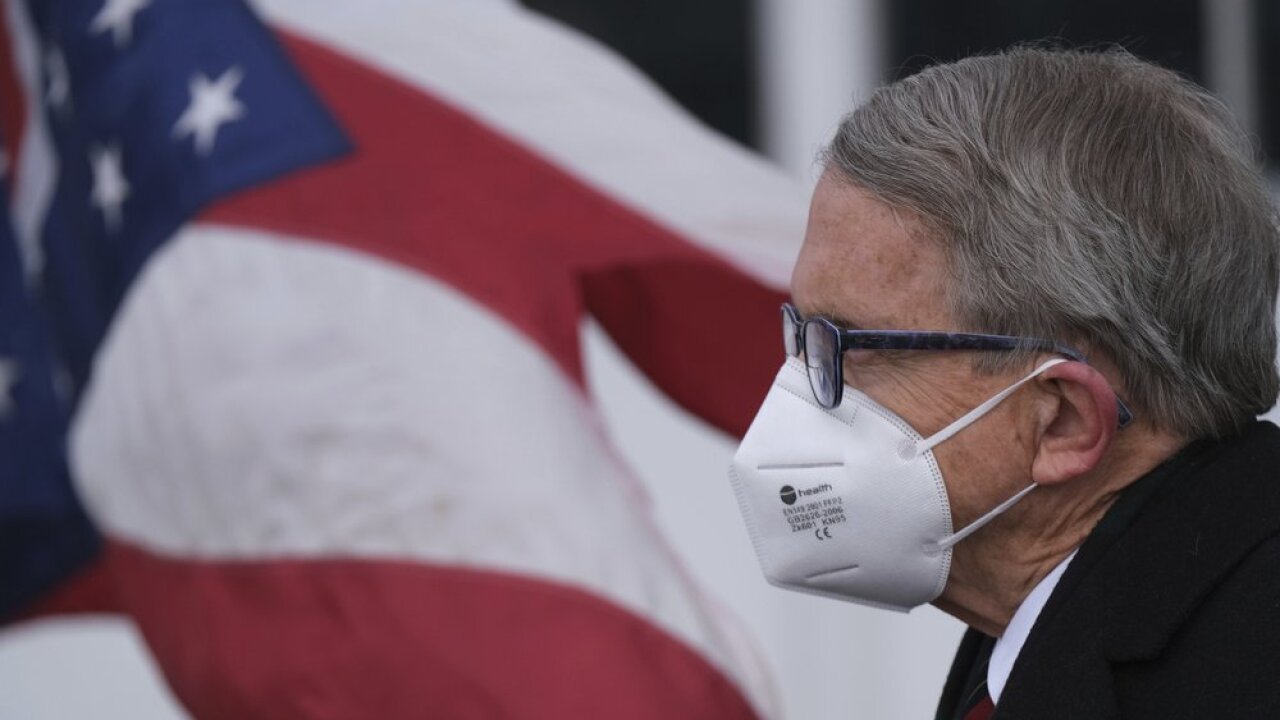COVID-19 vaccination is open to all Ohioans over the age of 16 today, and Cintas Center — the only mass-vaccination site within an hour of Cincinnati — will begin receiving 5,000 doses a week starting March 31, Gov. Mike DeWine announced in a Thursday news conference.
DeWine expects most of those doses to be the Johnson & Johnson vaccine, which is administered in a single shot instead of the two-shot process used by Moderna and Pfizer’s COVID-19 vaccines.
From the perspective of a state government tasked with vaccinating 9 million people in the coming months, Johnson & Johnson is preferable for logistical reasons — each patient who receives it only needs to make one appointment. From the perspective of a patient, it means enduring only one jab in exchange for protection from the virus that forced the entire planet into quarantine in 2020.
Between the mass-vaccination sites like Cintas and the 1,300-odd smaller clinics administering shots, DeWine said Ohio will receive an all-time-high total of 571,000 doses in the final week of March.
“This is by far the highest amount that we have received, so if you had trouble in the past getting it, we just ask you — you know, this is an opportunity,” he said.
Patients under 40 cannot yet sign up for an appointment using the state’s Get the Shot tool, but DeWine said he expected it would begin accepting appointments for all Ohioans soon.
DeWine responds to veto override
Despite the long-past retraction of the health orders that — at different times during the pandemic — restricted business operations, closed schools and mandated a statewide curfew, Ohio lawmakers voted Wednesday to override DeWine’s veto of a bill limiting the Ohio Department of Health’s power to issue such orders.
Senate Bill 22, which will become law in 89 days if not struck down in court, gives the state legislature the ability to rescind orders and rules issued by ODH or the governor as soon as they are issued. It also limits how long a public health state of emergency can continue — past the 30-day mark, it needs approval from the Ohio General Assembly — and prevents local boards of health from issuing widespread quarantine orders. Local health boards also can’t quarantine individuals who have not themselves been diagnosed with a disease or been in contact with a diagnosed person.
Supporters have described Senate Bill 22 as a measure intended to prevent ODH from overextending its power — a frequent accusation made during the pandemic, when opponents of the spring 2020 lockdown, masking orders and other public health measures described them as attacks on personal liberty.
Their vehement resistance eventually became heated enough to push Dr. Amy Acton out of her job at the top of ODH and repel her would-be successor, Dr. Joan Duwve, who quit within a day of publicly accepting the position.
DeWine and opponents of the bill have described it as unconstitutional at best; at worst, DeWine said Thursday, it represents an active threat to the safety of Ohioans long past the end of the COVID-19 pandemic.
“My passion in describing to members of the public and the general assembly the problems with this bill did not come from what it will do to me or, in all likelihood, what it’s even going to do with this pandemic,” he said. “My passion comes from my deep concern and belief that this is not the only crisis we will face.”
DeWine argued the bill would endanger Ohioans by preventing health officials from containing future outbreaks and effectively tamping down on public health threats. Those threats could be as serious as Ebola virus, he said, but it’s more likely they’ll be mundane.
“It might be something as simple but as dangerous as bad lettuce, where a general order cannot be issued for anybody who may have bought that to take action,” he said.
The governor added he expected legal challenges to the bill but did not know whether his office would be the first to make one.
Spring breakdown
Dr. Bruce Vanderhoff, chief medical officer for the Ohio Department of Health, encouraged unvaccinated Ohioans to continue avoiding travel until they’ve had their shot or shots. He acknowledged the spring weather might be tempting and the positive pandemic forecast might seem like permission to be less careful.
Still, he advised would-be travelers to get vaccinated first and vaccinated travelers to continue observing anti-infection safety measures such as mask-wearing, social distancing and frequent hand-washing.
“We’re in the final stretch of this marathon, so let’s keep up our masking and distancing even as more of us roll up our sleeves and get vaccinated,” he said.
By the numbers
One in four Ohioans had received at least one dose of a COVID-19 vaccine by Thursday afternoon. Uptake is proportionally highest among people ages 70-74, and women are getting the shot at a notably higher rate than men.
DeWine and Vanderhoff both described the state’s case numbers and hospitalization totals as having reached a plateau, remaining relatively consistent over the court of March.
ODH on Thursday reported 1,848 new COVID-19 diagnoses, 123 new hospitalizations and 13 patients who had been newly admitted to intensive care units.



